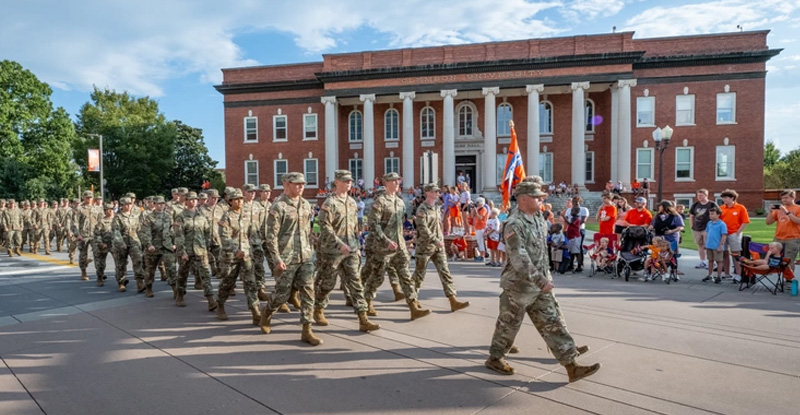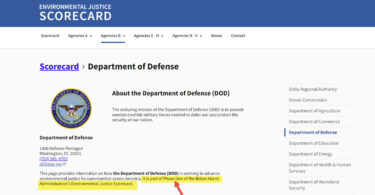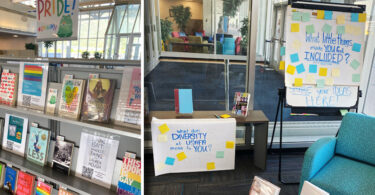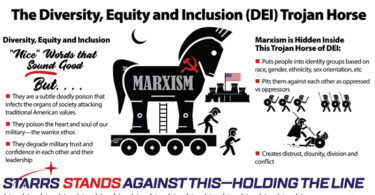This may be what is happening at military service academies, but it is definitely happening at universities/colleges where ROTC programs are, which produce the majority of officers for the military:
Hardly Inclusive, Diversity Mandates Have Politicized Campus Life (By Samuel J. Abrams, professor of politics at Sarah Lawrence College and a senior fellow at the American Enterprise Institute)
. . . . The main drivers of overly politicized campus life seem to be the diversity, equity and inclusion (DEI) offices — divisive, omnipresent forces on campuses that thrust students into the intense, chaotic and often vicious political world. It’s why, perhaps, that DEI offices are under scrutiny across the country.
Today, even before incoming students register for classes or unpack their moving boxes, many participate in orientations coordinated by a cadre of administrators from various offices on campus.
In many of these sessions, students are inundated with political messaging.
They’re told what words to use, and topics that can and cannot be questioned or debated.
At required workshops, there is often more emphasis placed on differences and immutable characteristics of students than on community and shared experiences.
Being able to learn for the sake of humanistic inquiry no longer seems to be an important feature of higher education in America.
An overemphasis on the ideology of DEI can turn many aspects of college life into a political battlefield.
From affinity group centers to residence halls, DEI officers police how students engage with each other; some curtail open exchange and many students choose self-censorship.
Should someone slip and conflict with the DEI orthodoxy, there are bias reporting hotlines for students to use.
This naturally increases the prevalence of self-censorship, which is dangerous. Gone are the days of learning how to navigate differences, work with others, and experience both the pain and pleasure of complex life.
DEI offices do not appear to be interested in building community bridges.
Consider the recent tragedy of Hamas brutally murdering, torturing and kidnapping Israelis in the Oct. 7 surprise attack. Rather than moving quickly to morally condemn a barbaric act, many schools sat in silence.
On some campuses, DEI directors provided one-sided narratives in statements about the attack, without acknowledging Hamas’s brutality or the impact that the attack had on Jewish students. . .
. . . As Tabia Lee, a former DEI administrator, has observed,
“DEI is built on the unshakable belief that the world is divided into two groups of people: the oppressors and the oppressed.” Jews are branded as oppressors and Israel is considered a “genocidal, settler, colonialist state,” Lee says. This way of thinking, she says, means that “criticizing Israel and the Jewish people is not only acceptable but praiseworthy” and “if you defend them, you’re actively abetting racist oppression.”
Rather than supporting students struggling with violence and death, the divisiveness on campuses allows the pressure and intensity to mount.
DEI offices have failed to achieve their real mandate of supporting all students of all backgrounds. . . . (read more on The Messenger)
Also read:
The Sickness of Our Universities—and the Cure by By Victor Davis Hanson
. . . Joseph-McCarthy-era “loyalty oaths” have returned to campus under the woke veneer of “Diversity, Equity, and Inclusion Statements.” Refuse to issue such a personal manifesto—and one will suffer career consequences.
Unpopular or unwelcome questioning of left-wing university orthodoxy is libeled as “hate speech.”
Dissenting views are officially censored, slandered and suppressed as “misinformation” and “disinformation.”
Face unproven allegations of “inappropriate behavior” and one can expect to lose one’s 4th, 5th, and 6th Amendment rights in any star-chamber university inquiry.
Admissions to universities, along with faculty hiring, retention, and tenure, are predicated on racial preferences and de facto quotas.
Even before the Supreme Court struck down affirmative action, universities had already galvanized to implement ways to ignore its anticipated ruling—in good Confederate nullification style.
The old notion of “disparate impact” and “proportional representation” that set hiring and admission quota on the basis of racial demographics have given way to a sort of “reparatory” admissions—in which whites, regardless of grades and test scores, are collectively to be admitted and hired in far smaller numbers than found in the general population, and certain non-white groups, particularly East and South Asians, are actively discriminated against.
The old Enlightenment notion of not stereotyping entire groups as a faceless collective, and instead seeing persons as diverse and unique individuals, has given way to sloppy sloganeering like “white privilege,” “white supremacy” and “white rage.”
Campuses apparently believe that a working class mechanic in Fresno County or a minimum wage tractor driver in Dayton, Ohio enjoys more power and privilege than Oprah Winfrey or Ibrahim Kendi.
For the last few decades, the public has been willing to put up with all this madness in higher education—even as political correctness squashed free speech on campus and affirmative action descended into woke racial essentialism. . . . (read more)








Leave a Comment